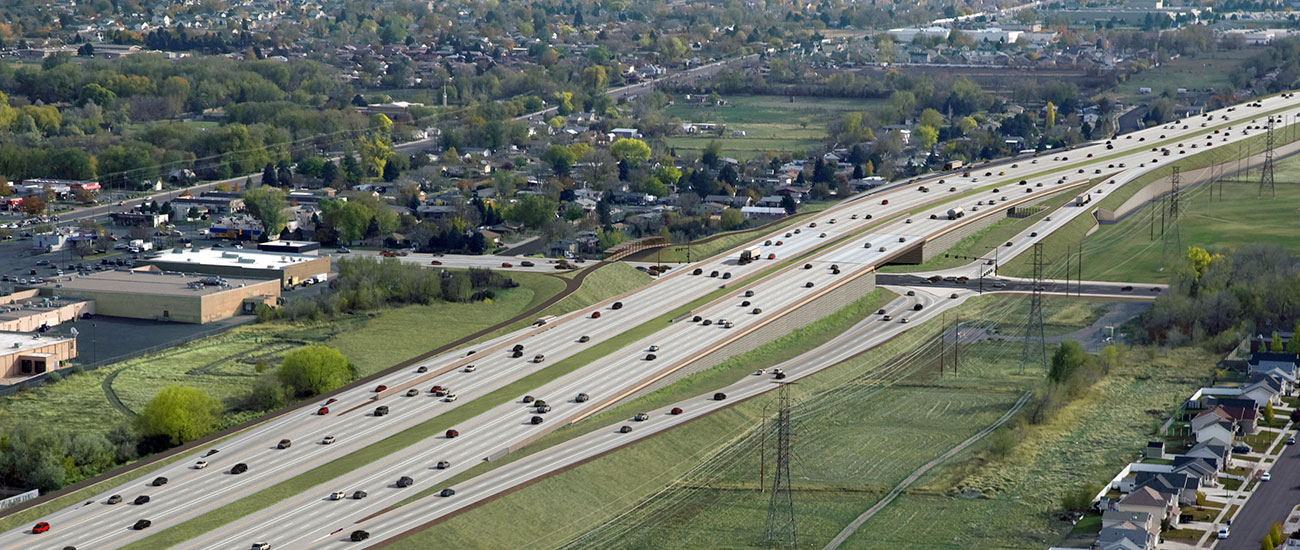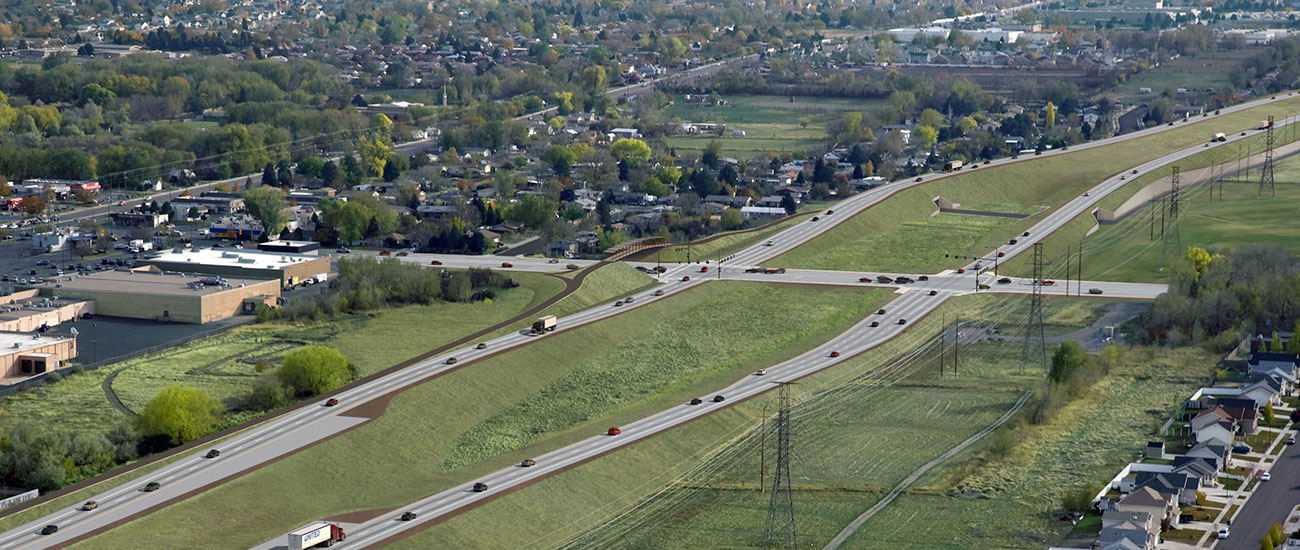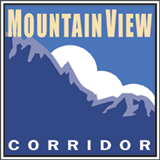

Frequently Asked Questions
Utah County – In October 2019, UDOT opened an additional 3 miles with the extension of MVC from 2100 North at Redwood Road to S.R. 73 to make a total of 6 miles of roadway and trails in Utah County. Future construction on the segment from Porter Rockwell Blvd. to 2100 North will be scheduled when funding is identified and allocated.
Salt Lake County – Construction started in the Spring of 2019 from 4100 South to S.R. 201 (with ramps to California Ave). Future construction on the segment from S.R. 201 to I-80 will be scheduled when funding is identified and allocated.
During initial construction of MVC in Salt Lake County, UDOT built two lanes in each direction from Redwood Road (at approximately 16000 South) to 4100 South (between 5600 West and 6000 West). Initial construction includes frontage roads in each direction from 16000 South to Old Bingham Highway with signalized intersections and bike lanes. North of Old Bingham Highway, UDOT built the outside lanes of the future freeway in each direction and the future on and off ramps. A biking and walking trail runs adjacent to the entire corridor.
In Utah County, 6 miles of roadway and trails on 2100 North from I-15 to S.R. 73 in Saratoga Springs. The roadway consists of two lanes in each direction with signalized intersections where MVC crosses local roads. Land is preserved in the middle for future expansion.
MVC features 17 miles of paved trails that run the entire length of the current roadway in Salt Lake County. In addition, nine miles of striped bike lanes exist from Redwood Road at approximately 16000 South to Old Bingham Highway. In the future, the bike lanes will remain in place because that section of roadway will become the frontage road for the future freeway. Bike lanes cannot be constructed north of Old Bingham Highway because that section of roadway was built to function as outside lanes for the future freeway. Click here for additional information regarding MVC’s bike lanes and paved trails.
Yes, in preparation for future roadway construction, MVC is coordinating the relocation of existing utility transmission lines and the construction of new lines in a location that accommodates the future of MVC. Relocation of transmission lines will be underway during the next couple of years and are currently taking place from 2900 South to S.R. 201.
The MVC team is using a phased construction approach designed to balance transportation needs with available funds. Future construction will enhance initial construction by converting intersections to interchanges and adding inside lanes to achieve a fully functional freeway. This phased approach is part of the overall MVC plan to address short-term regional transportation needs while providing a long-term solution for the future.
To meet projected transportation demands in the year 2030, MVC will eventually be a 35-mile freeway from I-80 in Salt Lake County to SR-73 in Utah County. The full freeway will connect with I-80 in Salt Lake City and I-15 at 2100 North in Lehi. The transit components of the project include extending light rail (TRAX) to Daybreak Parkway, which is built and operational, and a transit solution located along 5600 West in Salt Lake County. A trail and sidewalk system will run adjacent to the entire corridor.
The MVC team is using a phased construction approach designed to balance transportation needs with available funds. UDOT built two outside lanes in each direction with signalized intersections where future freeway interchanges will be located. Building the outside lanes first preserves the land in the middle where future lanes will be added. Future construction will build the remainder of the corridor, including a transit solution and enhancement of the initial construction by converting intersections to interchanges and adding inside lanes to achieve a fully functional freeway. When MVC is complete, it will be a 35-mile fully functional freeway from I-80 in Salt Lake to S.R. 73 in Lehi.
Utah County – Future construction on the segment from Porter Rockwell Blvd. to 2100 North will be scheduled when funding is identified and allocated.
Salt Lake County – Future construction on the segment from S.R. 201 to I-80 will be scheduled when funding is identified and allocated.
MVC currently consists of two lanes in each direction with signalized intersections. Future construction will expand the corridor over time by adding more lanes and bridges (freeway interchanges) when needed to meet traffic demands and as funding is available. This phased approach is part of the overall MVC plan to address short-term regional transportation needs while providing a long-term solution. The future construction of a full freeway is not currently funded.
Although the initial phase of MVC will include stoplights like Bangerter Highway, MVC will evolve into a free-flowing freeway by converting intersections to interchanges and adding inside lanes in subsequent construction phases. Bangerter Highway, with intersection widths at approximately 150 feet, was not originally planned to be converted to a freeway system with interchanges.
The transit components of the project include extending light rail (TRAX) to Daybreak Parkway, which is built and operational, and a transit solution located along 5600 West in Salt Lake County. The Phase 1 transit component along 5600 West will be built once funding is identified. This transit system will consist of the following:
- 29 miles in length
- Serves four cities (West Jordan, Kearns, West Valley, Salt Lake City)
- Serves Salt Lake International Center, Salt Lake International Airport and Downtown Salt Lake City
Frontage roads were constructed in two areas along MVC: between 16000 South and Old Bingham Highway in Salt Lake County and on 2100 North in Utah County.
The frontage roads were limited to these two areas due to property constraints, impacts to existing infrastructure and compatibility with existing street networks.
The initial segment of MVC on 2100 North is a frontage road system that consists of two lanes in each direction with signalized intersections. Future construction will expand the corridor over time by adding more lanes when needed to meet traffic demands and as funding is available. This phased approach is part of the overall MVC plan to address short-term regional transportation needs while providing a long-term solution. The future construction of a full freeway is not currently funded and would require additional environmental study in order to be constructed.
The trails are maintained by the local cities where MVC is located. The cities are Lehi, Saratoga Springs, Riverton, Herriman, West Jordan, South Jordan and West Valley.
In Utah County, a 10-foot sidewalk runs adjacent to the corridor on 2100 North from I-15 to Redwood Road. An additional 6-foot sidewalk and 10-foot trail runs from Redwood Road to S.R. 73, with a pedestrian and bike trail underpass at the intersection of MVC at 2100 North and Redwood Road.
During the initial planning studies for MVC, the project team evaluated potential sound wall locations for each segment of the planned roadway. The sound analysis identified areas that qualified for sound walls according to UDOT policy.
During the initial planning studies for MVC, the project team evaluated potential sound wall locations for each segment of the initial construction. The sound analysis identified areas that qualify for sound walls according to UDOT policy.
A sound wall near surrounding neighborhoods on Mountain View Corridor may be warranted in the future when additional lanes are built. Prior to the design of future phases of MVC, the project team will conduct another sound analysis to determine future sound wall locations. If the sound analysis found that noise mitigation measures are reasonable and feasible, UDOT will conduct a balloting process to determine if affected property owners and residents are in favor. UDOT will then implement noise mitigation measures such as sound walls, as part of the roadway project.
To view the current and future locations of MVC, please use our interactive map.
UDOT has identified the properties needed to build the corridor and the owners have been notified. By preserving land now and building in phases, UDOT will not need to purchase additional land when building the future phases of the roadway.
According to state law, unless you own the property being demolished, you cannot salvage any items.
UDOT has partnered with Habitat for Humanity to donate reusable items. The items are then sold in the Habitat for Humanity’s ReStore to fund low-income housing projects. Any items not sold are either recycled or donated.
The long-term plan for the Mountain View Corridor is a fully functional freeway that serves the needs of residents and businesses in the area, including the movement of goods and materials by semi-truck. As a state roadway, trucking companies comply with standard size and weight regulations for Utah state roads.
Various resources are available to help you stay up-to-date on the latest project information. This project website contains the most comprehensive information including the project overview, interactive map, current construction updates and contact information. Follow the project on Facebook, Instagram or Twitter. You may also contact one of the public involvement representatives with any questions via the project information phone line, 800-596-2556 or email.
The areas where the corridor has yet to be built (S.R. 201 to I-80 and 2100 North to Porter Rockwell Blvd) are preliminary designs and are subject to change.
The signals on MVC are coordinated for northbound and southbound traffic only during peak travel times on weekdays. The signals are far enough apart that even a small difference in a vehicle’s speed between signals creates a big difference when a vehicle arrives at the next signal. UDOT carefully balances the signal timing with the speed limit on the corridor. UDOT is analyzing and retiming the signals more often on MVC because it is an area with constant traffic growth and changes.
In Salt Lake County, from 16000 South to 4100 South, please contact UDOT’s Region Two Communications Manager Courtney Samuel at csamuel@utah.gov
In Utah County, on 2100 North from I-15 to S.R. 73, please contact UDOT’s Region Three Communications Manager Geoff Dupaix at gdupaix@utah.gov
The Mountainland Association of Governments and UDOT are currently studying a potential extension of a freeway system on Foothill Boulevard south of where Mountain View Corridor will tie into S.R. 73.

